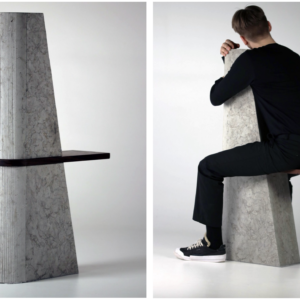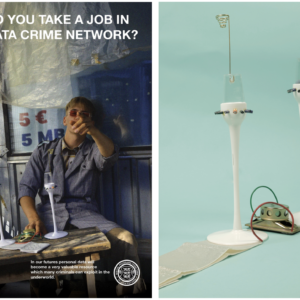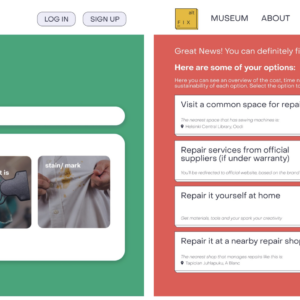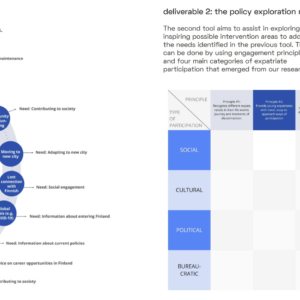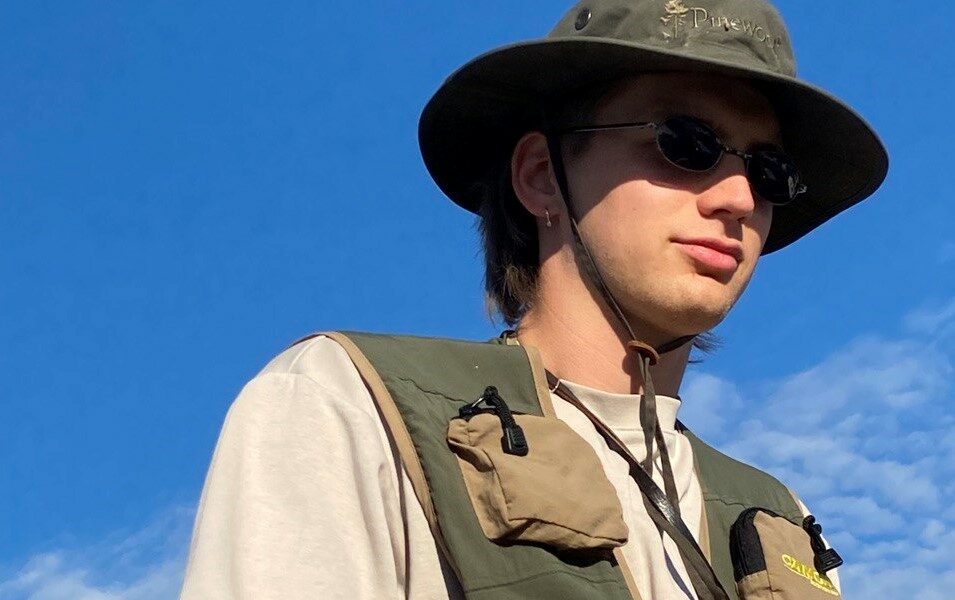
Mõtus Lõmaš Kama.
The Product Designer Form will start the new academic year still in the echo of the previous year. The September questionnaire was filled out by Mõtus Lõmaš Kama, a recent BA graduate (2022). Having studied industrial design, his physical objects have reached, for example, the Stockholm Furniture & Light Fair 2020 exhibition with the limestone bench Kivialune. In addition, at the beginning of the COVID-19 pandemic, he and his team members designed a protective visor that made it to the market. With his bachelor’s thesis “Co-Design Workshop Model for the Sustainable Functioning of Kopli 93 Community Centre’s Core Team”, Lõmaš moved from the classical field of industrial design to the landscape of system, service, and social design. Today, his studies have taken him to a master’s degree at Aalto University in Finland.
Name: Mõtus Lõmaš Kama
Position: Master’s student at Aalto University, Creative Sustainability major in design
Relation to EKA: Graduate of BA Industrial and Digital Product Design, the Year 2022
1. What projects are you currently working on?
Funnily enough, I don’t have any projects that I’m working on at the moment. I’m studying intensively at Aalto University, where in the current study period I’m taking theoretical courses that prepare me for practical projects. The main courses are Sustainability in Business and Issues in Sustainability Politics. Both are very new and exciting topics for me! However, several challenging service and strategic design projects await.
2. What is your favorite step in product creation and what does it look like?
When it comes to design projects, I equally like all kinds of activities related to research and discovery (rather, qualitative methods such as interviews, observations, and ethnography) and generating solutions to problems identified from the research through brainstorming and discussions. These are often the most fun phases because then you don’t have to put a stop to the wildest ideas.
3. Paper and pen vs digital medium – which do you prefer?
As needed, personal notes and ramblings end up on paper, but if something needs to be presented, mostly digitally.
4. What was your favorite project while studying at EKA? What did you discover during that?
Speculative design summer school – during an intensive short project, my team and I identified various possible development directions for the Estonian labor market by 2035. We developed these directions into speculative scenarios and designed a device, which would help to do the given work, for the workplace by illustrating each scenario. For example, one scenario was the rise in the value of personal digital and biological data, which makes it insanely difficult to obtain the data legally. So we designed a data transfer and smuggling device for data gangsters to make a living in 2035.
The project taught me how important it is as a designer to think about the future and how much the decisions made in the present moment can direct the future. In addition, I realized that speculative design and future thinking are very cool design trends that benefit industrial, digital product and service designers.
5. Guilty pleasure – “poor design or means for designing” that you secretly like?
I have a bit of a love-hate relationship with Bolt Drive. It is a very good service, which removes the need to own a personal car for a lot of people, so the number of cars in the city could decrease. In addition, the car-sharing economy is also more environmentally friendly. My personal dilemma, however, is that the service makes using a car so simple, that even those people who previously were very good at using public transport and bicycles (including myself), use it now more often. Therefore, by using Bolt-Drive, I still contribute to car domination in urban areas and increase my environmental footprint. But sometimes it’s still nice to drive a car…
6. Something you wish you had invented/ designed?
A wheel.
7. 1 good reading that has inspired you professionally?
It’s hard to pick one, so here are three:
- Ezio Manzini – “Design, When Everybody Designs: An Introduction to Design for Social Innovation” – Probably the most relevant overview of today’s emerging design disciplines and how to understand them.
- Anthony Dunne & Fiona Raby “Speculative Everything. Design, Fiction and Social Dreaming” – About speculative design and future thinking. Useful for a designer to think beyond just tomorrow.
- Donella Meadows “Thinking in Systems: A Primer.” A good introduction to systems thinking. It helps the designer to see the big picture and perhaps better understand how the problem they are solving and also the solution are located in today’s complex world.
8. Besides design, what else attracts you?
Sustainability, nature-friendliness, and accessible urban space are particularly close to my heart. As hobbies, I’m fascinated by analog photography, and music and mixing it up behind the DJ controller (mainly at home with friends), cooking, and traveling around in the open air (especially by bicycle).
9. What experience so far has shaped you the most as a designer and how?
I’ve definitely been shaped the most during the exchange year of my bachelor’s degree studies. Acquiring new knowledge and experiences in a completely different environment opens you up and enriches thinking tremendously. This is especially so when you’re surrounded by an enthusiastic, international and multidisciplinary group of young designers. I recommend it to everyone, regardless of the field of study.
………
In case the ideas and doings of Lõmaš interested you, you may contact him via email:
l6mash.kama@gmail.com


